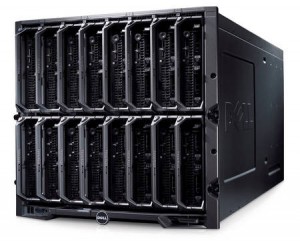
Categories

Sponsors


Archive
 Blogroll 
Badges


Community

|
Posted in Virtual Machine Manager | 2 Comments | 15,068 views | 30/11/2009 02:15
You may get this error when you want to migrate a virtual machine with Live Migrate. Error (10698)
Virtual machine X could not be live migrated to virtual machine host Y using this cluster configuration. (Unspecified error (0x80004005)) Recommended Action Check available memory (ram) on host Y. Maybe you have enough ram to pass SCVMM pre-checks but you don’t have enough to use Cluster service. Save state another virtual machine on host Y and retry migrate.
Posted in Exchange Server, Windows Powershell | 1 Comment | 14,494 views | 29/11/2009 21:01
I wrote a function for Hosted Exchange 2010 to create a new mailbox on Exchange Server 2010.
Usage of function:
I used System.Directory.Services to get Active Directory domain. Lets see how does it work: CustomerOU is the base of your user container. Just type your OU name like “Exchange” or “Users”.
Posted in Virtual Machine Manager, Windows Server | No Comment | 16,814 views | 27/11/2009 17:07
Dell Blade is a trusted virtualization solution for hosting companies. I did some benchmark tests on our Blade server (Dell PowerEdge M1000E). I used two different pyhsical servers, Dell PowerEdge M600 and Dell PowerEdge M610. Also I used two virtual machines to compare results. Server configurations: DELL M600: DELL M600 VM: DELL M610: DELL M610 VM: I used Passmark PerformanceTest 7.0 for all benchmark tests. (http://www.passmark.com)
Posted in Virtual Machine Manager, Windows Powershell | No Comment | 58,634 views | 27/11/2009 02:22
I got a question about ISO feature on Technet forums today. Jan Marek: Ok. But I have 200 virtual machines and I want to create a new one and use iso for virtual dvd rom. It is not working because I already use it for another server. How can I find from which one I should disconnect this iso?
Really good question I think. Because as I know, you can’t find it with SCVMM console. Also checking all virtual machines one by one is a way but it could be a nightmare, if you have so many virtual machines. I wrote a Powershell script for Jan. I want to share:
If your ISO name is “debian.iso”, just replace “test” with “debian”. Also if you use just “Get-ISO”, you can see all iso images on all virtual machines. You can reach that post from here: If we can see them with SCVMM console, please let me know.
Posted in Virtual Machine Manager | 2 Comments | 13,132 views | 23/11/2009 14:39
You may get warning (13921) after migration of a virtual machine from a host to cluster: Warning (13921)
Highly available virtual machine VX7526 is not supported by VMM because one or more of its network adapters is not configured correctly. Recommended Action Let’s check virtual network adapters of the virtual machine: As you see, I have 5 network tags. But the “Internal Network” exist in the Cluster? Let’s check it. Right click to Cluster and click to Properties. Click “Networks” tab. Now I see only 4 network cards. So where is the “Internal Network”? That means I don’t have any network called “Internal Network”. So I have to create Internal Network in all Clustered Hosts or I have to choose another network. I simply choose Backup Network for my virtual machine. Tadaaaa! We fixed it :) Remember, in order to assign a virtual network to virtual machine in a cluster environment, you need to create that virtual network in all hyper-v hosts. Good luck.
Posted in Virtual Machine Manager, Windows Powershell, Windows Server | No Comment | 13,778 views | 20/11/2009 02:18
You need to add secondary ip to external host? You only need to Powershell and Psexec. Psexec is a small and free program. You can download Psexec from Microsoft Technet. It works great!
You need to add /c switch for cmd.exe to execute scripts in a script. You need to accept Eula of Psexec first.
Posted in Exchange Server | No Comment | 3,645 views | 14/11/2009 18:10
Exchange Server 2010 ile birlikte gelen yeni bir özellik sayesinde artık maillere otomatik imza eklenebildiğini söylemiş ve nasıl ekleyebileceğinizle ilgili örnek bir Powershell kodu eklemiştim. Şimdi o kodda kullanabileceğiniz diğer ADAttribute’ları ekliyorum. %%DisplayName%%
%%FirstName%% %%Initials%% %%LastName%% %%Office%% %%PhoneNumber%% %%OtherPhoneNumber%% %%Email%% %%Street%% %%POBox%% %%City%% %%State%% %%ZipCode%% %%Country%% %%UserLogonName%% %%HomePhoneNumber%% %%OtherHomePhoneNumber%% %%PagerNumber%% %%MobileNumber%% %%FaxNumber%% %%OtherFaxNumber%% %%Notes%% %%Title%% %%Deparatment%% %%Company%% %%Manager%% %%CustomAttribute1%% %%CustomAttribute15%% HTML kullanabildiğiniz için yukardaki Attribute’ları istediğiniz gibi yerleştirerek, güzel bir imza oluşturabilirsiniz. |











